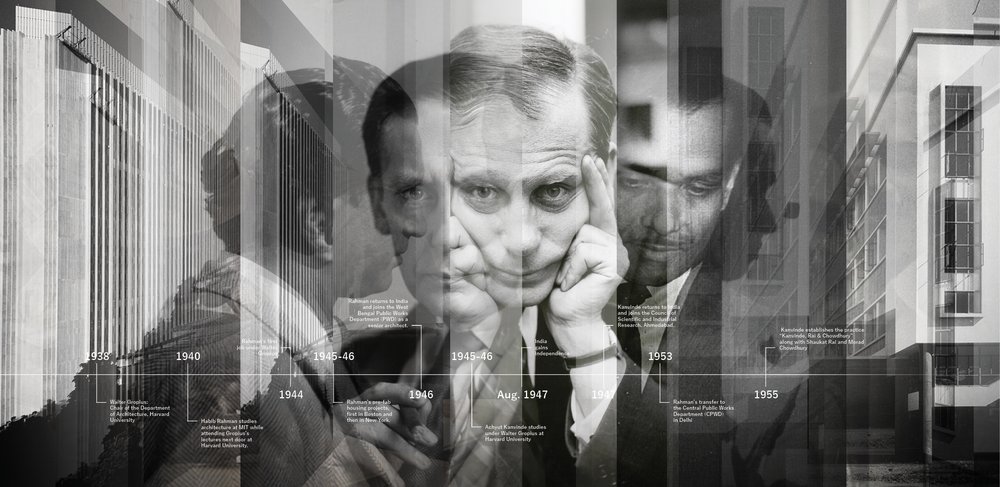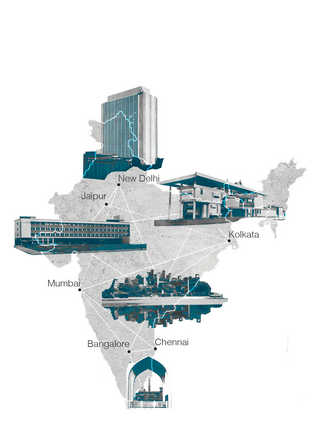

Project Description


"Gropius Protégés: Stimulating Architectural Modernism in India"
Post-Independence in India (after 1947), the architects consciously strove to look beyond the colonial British precedent as also emphasised by Indian Prime Minister Jawahar Lal Nehru’s vision to modernise the country. Interestingly, Bauhaus was interpreted as ‘so not British’, ‘international’ with no historical nods and immediately found appeal with the Indian architects in making. Some young architectural students also made their way overseas. Amongst them were A.P Kanvinde and Habib Rahman who were mentored by Walter Gropius (Bauhaus founder, 1919) in the USA and they were instrumental in bringing the Bauhaus ideology to the capital city of New Delhi and other parts of the nation for several significant (new) civic buildings of 1960s. Their works are particularly important as they show up before the advent of Swiss-French architect Le Corbusier’s modernism attempt in Chandigarh and American architect Louis Kahn’s adaptation of International Style in Ahmedabad and Bangladesh.
Next, when the West grappled with World War II and the challenges of Industrial Revolution, India was scripting her way out of the British colonial rule. The architecture of the post war world was not the same. New ideals and materials were required to rebuild the war-torn world, giving rise to modernism. The influence of the global ‘Masters’ or the avant-garde European architects was pronounced on the architects of the newly Independent India as the massive, aristocratic, and glorified structures of the past as well as the traditional materials and construction methods could not serve the driving agendas and vision for a liberated, secular and democratic country. The first-generation of architects in Independent India became responsible for the implementation of emergent global design philosophies into a nation that desperately needed stable democratic and secular institutions to be built promptly with limited resources in her infancy as a backbone for political, economic, and social reforms.
Further, during the emergence of architectural modernism in India, periodicals such as Design (1957-1988) played a crucial role in shaping a newer identity. From the 1950s to the 1980s, the term 'modern' often connoted a sense of foreignness, encompassing material, technical, and moral-cultural dimensions. Design's dissemination to overcome these obstacles is pivotal as it helps decode modernity for India as an intrinsic feature. It showcases its presence in spaces crafted by India's first-generation modern architects. A comprehensive exploration, tracing this across Design issues, unveils the collective perception of Indian architectural modernism, potentially forming an open genre in better understanding of the global phenomena of modernism.
Walter Gropius indeed has contributed significantly across the globe through his thoughts and ideas. Indian subcontinent is no different case, post-independence in the late 1940s – India needed to find its new image – breaking away from the shackles of colonialism, anything that was not related to British, seemed enticing. Thus, an experimentation to give young architects trained under the modernism master – Walter Gropius was the best shot. Amongst them were A.P Kanvinde and Habib Rahman who were mentored by Gropius in the US and they were instrumental in bringing the Bauhaus ideology to the capital city of New Delhi and other parts of the nation in several significant new civic buildings of 1950-1960s.
There is no comprehensive academic research on the influence of the Bauhaus in India and its global connections. There is scope to trace the indirect influences of Bauhaus knowledge and inverse ideas by connecting the dots between the Walter Gropius and the first-generation Indian architects that carried forward the Bauhaus legacy in South Asia. This shall help to renew the continued Gropius interactions from a multi-cultural perspective.
In addition, we shall have a closer look at the editorials of Design (1957-1988) journal as an Anthology for two reasons, a) The connection of Walter Gropius, Marcel Breuer, A.P Kanvinde, and Habib Rahman as editorial board members, b) To study the discourse of Indian architectural modernism and its contribution to the phenomena of global modernism moving away from the colonial shadows. The Design editorials are a tool to understand how architectural modernism was influenced, absorbed, and evolved in India (post-independence).
Research Questions:
- How did Bauhaus find its way to Indian Subcontinent?
- Which buildings in India were important in defining Modernity in the mid-20th Century in relation to the ‘Bauhaus’ School of thought?
- What was the influence of the Bauhaus upon the buildings designed by Habib Rahman and A.P Kanvinde, protégés of Gropius?
- When & How did the first generation Indian architects distant themselves from the modernism masters and developed their own design language formulating the Indian architectural modernism we see today.
Methods:
Knowledge transfer and dialogical exchanges through – publication, curating workshops at international centers, and participation in the networking events
- Pappal Suneja, PhD Scholar, Faculty of Architecture and Urbanism, Bauhaus University Weimar.

